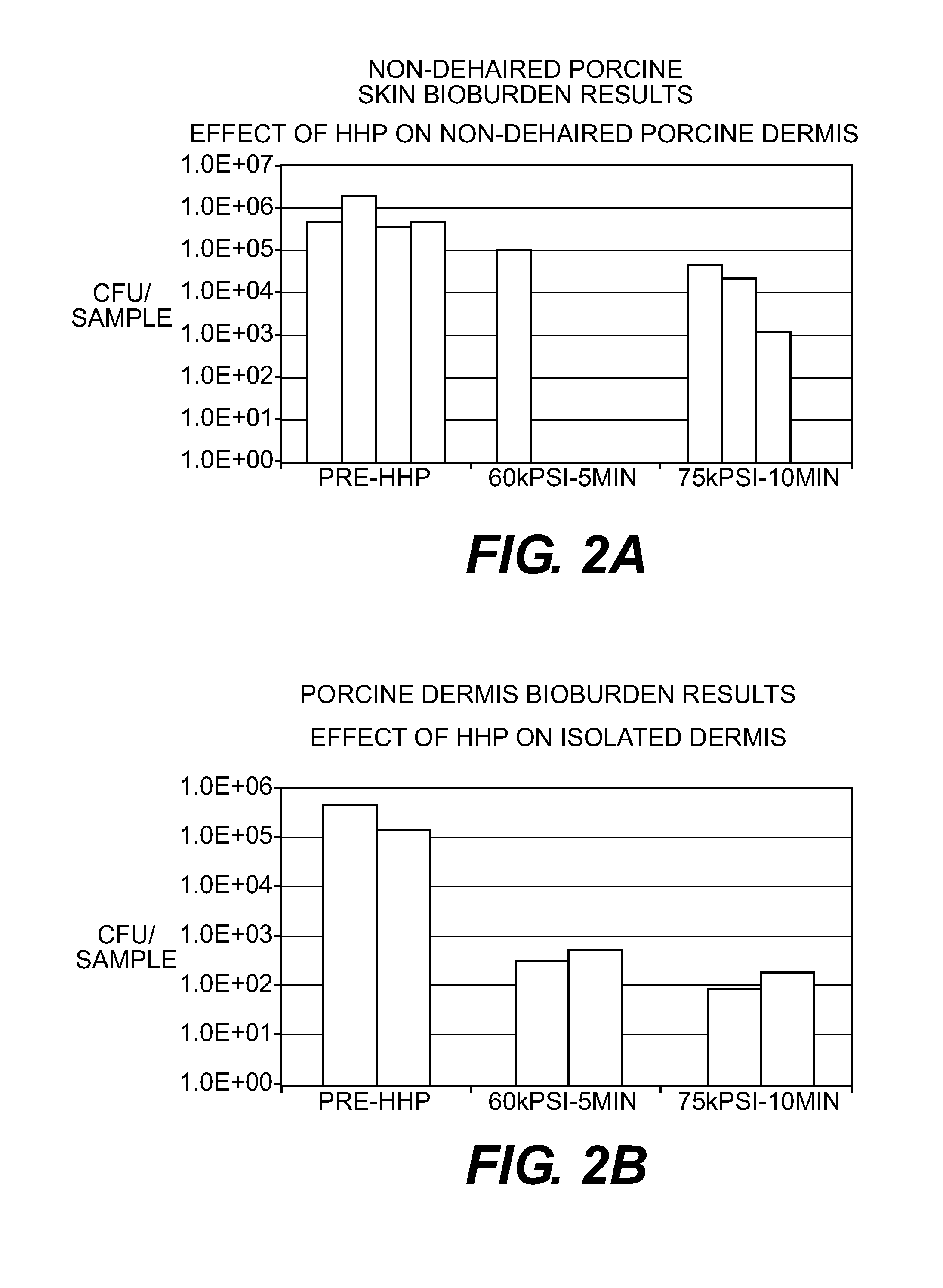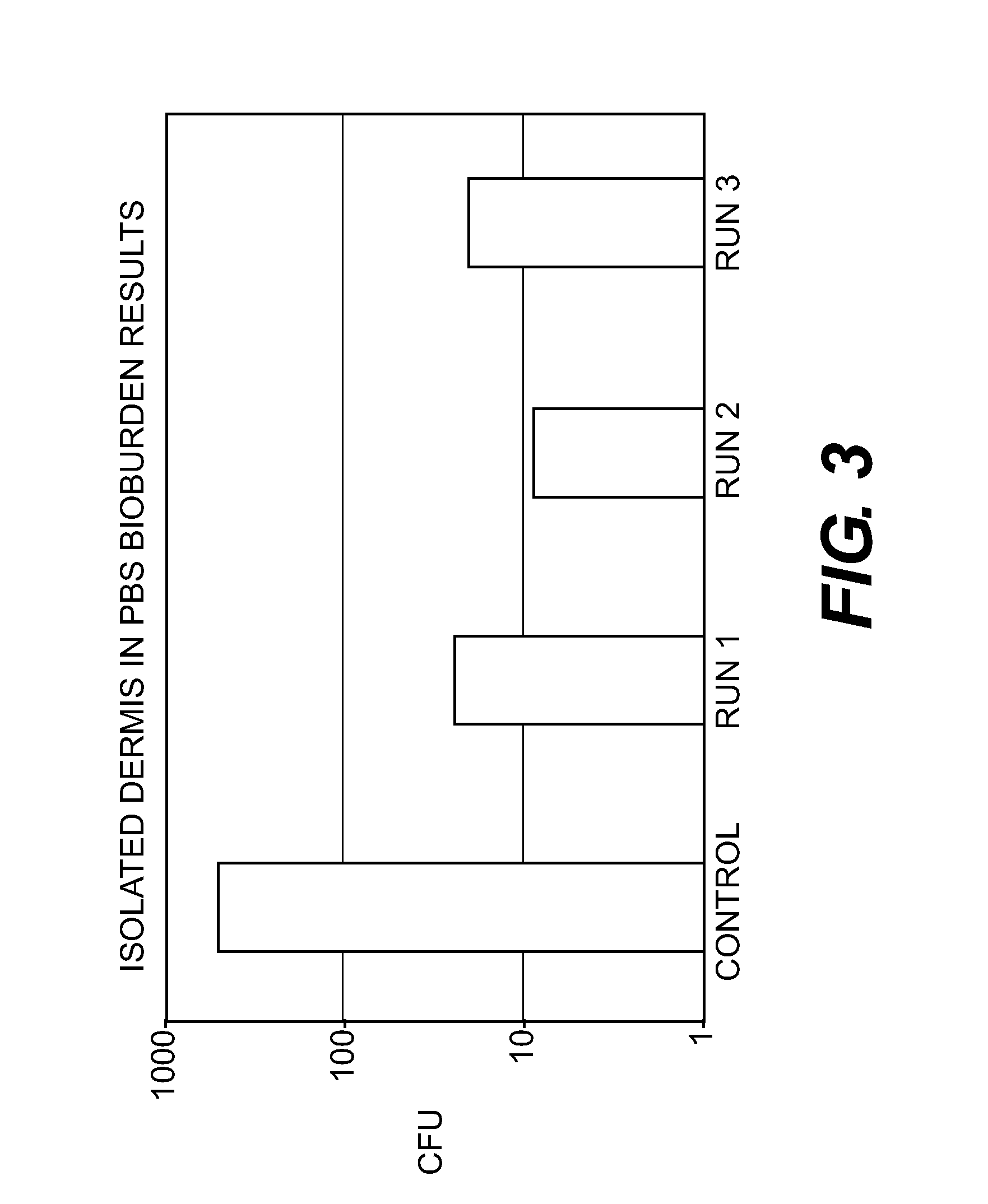Method for processing tissues
a tissue and tissue technology, applied in the field of tissue processing, can solve the problems of tissue freezing and thawing
- Summary
- Abstract
- Description
- Claims
- Application Information
AI Technical Summary
Benefits of technology
Problems solved by technology
Method used
Image
Examples
example 1
Reduction in Tissue Bioburden
Porcine skin was used. The tissue was provided either as whole skin with hair intact or as dermal layers that were isolated from the epidermis and subdermal fat layers. The dermal layer was isolated by cutting the subdermal fat and a thin layer (1-2 mm) of the lower dermis from the dermis, and by cutting a thin layer (0.25-1 mm) of the epidermis and upper dermis from the dermis. Hair was mechanically removed before isolating the dermis. Both sample types were previously frozen, and to increase the bioburden levels in isolated dermis tissue, all of the tissue was stored together (whole skin and isolated dermis) for several days after thawing under refrigerated conditions. Each piece was individually packaged using a DENI™ Magic Vac food saver device. Each piece was sealed within three vacuum sealed pouches to prevent exposure of porcine tissue to the pressurization vessel. The samples were packaged with a minimum amount of fluid in the sealed pouch such t...
example 2
Control of Process Temperature
Porcine skin tissue was obtained and dermal tissue was isolated as described above in Example 1. The tissue was stored at −80° C. prior to use. The samples were then thawed in a convective incubator held at 7° C. for up to 36 hours. All of the samples were cut into approximately 7 cm×7 cm square pieces. Packages were made using the DENI™ Magic Vac packaging to closely fit the dimensions of the tissue.
Tissue samples were placed individually within pre-made packages. PBS was then added to almost fill the package (at least 50 mL on average). The PBS was degassed prior to placement in the packages using a vacuum pull down with agitation for several hours prior to use. Degassing was considered complete when air bubbles were no longer forming around the stir-bar. As much air as possible was removed from the package by squeezing the package, and the open end of the package was sealed with a heat sealer.
Ice was used to cool the high hydrostatic pressure vessel....
PUM
| Property | Measurement | Unit |
|---|---|---|
| temperature | aaaaa | aaaaa |
| pressure | aaaaa | aaaaa |
| pressure | aaaaa | aaaaa |
Abstract
Description
Claims
Application Information
 Login to View More
Login to View More - R&D
- Intellectual Property
- Life Sciences
- Materials
- Tech Scout
- Unparalleled Data Quality
- Higher Quality Content
- 60% Fewer Hallucinations
Browse by: Latest US Patents, China's latest patents, Technical Efficacy Thesaurus, Application Domain, Technology Topic, Popular Technical Reports.
© 2025 PatSnap. All rights reserved.Legal|Privacy policy|Modern Slavery Act Transparency Statement|Sitemap|About US| Contact US: help@patsnap.com



